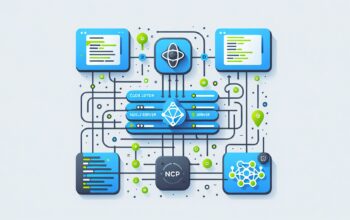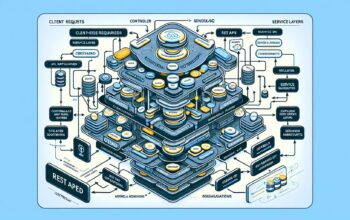Part 1: Understanding the Foundation
Imagine you’re planning to build a smart home that can understand your voice, remember your preferences, and help you manage daily tasks. You wouldn’t randomly connect different gadgets and hope they work together. Instead, you’d carefully choose components that complement each other, creating a system where each piece enhances the others.
This is exactly what we’re doing when we combine Node.js, LangChain, and Azure OpenAI Service to build intelligent applications. Today, we’ll explore why these three technologies create such a powerful foundation for AI development, setting the stage for our journey toward building a sophisticated customer support assistant.
Node.js: The Nervous System of Our AI Application
Think of Node.js as the nervous system of our AI application. Just as your nervous system rapidly transmits signals throughout your body, Node.js excels at handling multiple simultaneous connections and processing requests efficiently. This becomes crucial when you’re building AI applications that need to manage several user conversations at once.
Consider a busy restaurant where a skilled waiter can take orders from multiple tables without making anyone wait. Traditional server environments are like having one dedicated waiter per table, which works but requires far more resources. Node.js is that efficient waiter who can juggle multiple AI conversations without breaking a sweat.
The real magic happens when you realize that AI operations often involve waiting for external services to respond. While a traditional server might sit idle during these waits, Node.js continues serving other requests. This efficiency becomes essential when your application grows to handle hundreds of simultaneous AI conversations.
LangChain: The Orchestra Conductor
If Node.js is the nervous system, then LangChain serves as the conductor of your AI orchestra. Just as a conductor coordinates different musicians to create beautiful music, LangChain orchestrates various AI components to create intelligent, coherent applications.
Here’s where LangChain truly shines: it solves the fundamental challenge that raw AI models are like brilliant consultants with severe amnesia. They can provide excellent answers to individual questions but can’t remember what you discussed five minutes ago. LangChain gives your AI applications memory, context awareness, and the ability to use tools, transforming simple question-and-answer interactions into sophisticated, flowing conversations.
Azure OpenAI Service: The Intelligent Brain
Azure OpenAI Service provides the intelligent brain of our application. Think of it as having access to a brilliant research assistant who has read vast amounts of human knowledge and can engage in natural, contextual conversations. Unlike the free ChatGPT interface you might be familiar with, Azure OpenAI Service offers enterprise-grade reliability, security, and predictable performance.
What makes Azure OpenAI particularly compelling for business applications is its integration with Microsoft’s enterprise ecosystem. Your sensitive data stays within your Azure environment, you receive predictable pricing and performance guarantees, and you can scale your AI capabilities as your application grows.
Why These Three Create Magic Together
The synergy between these technologies becomes apparent when you consider what each brings to the table. Node.js provides the efficient, scalable foundation that can handle multiple AI conversations simultaneously without bottlenecks. LangChain gives you sophisticated tools to create AI workflows without building complex orchestration from scratch. Azure OpenAI Service delivers the natural language intelligence that makes human-like interaction possible.
Together, they solve the three biggest challenges in AI application development: performance and scalability through Node.js, complexity management through LangChain, and reliable AI capabilities through Azure OpenAI Service. It’s like having a race car with an expert driver on a perfectly mapped course.
What We’ll Build: A Customer Support Assistant That Actually Helps
Throughout this series, we’ll create a customer support assistant that goes far beyond simple chatbot responses. Our assistant will understand context, remember previous parts of conversations, provide personalized assistance, and know when to escalate complex issues to human agents.
Think about the difference between talking to a helpful store employee who knows the inventory, remembers your previous visits, and can guide you to exactly what you need versus someone who can only answer the specific question you just asked. We’re building the former—an AI assistant that provides genuinely helpful, contextual support.
Setting Your Learning Expectations
This series will take you on a carefully structured journey from understanding basic concepts to building production-ready AI applications. We’ll start with simple integrations and gradually build complexity, introducing each concept with clear explanations and real-world analogies that make abstract ideas concrete.
More importantly, you’ll develop intuition about AI application architecture. You’ll understand not just how to connect these technologies, but why certain approaches work better than others, when to use different patterns, and how to design applications that provide genuine value rather than just impressive demonstrations.
Ready for the Journey?
In Part 2, we’ll start building by setting up our development environment and creating the foundation for our customer support assistant. We’ll establish the project structure and configuration patterns that will serve as the backbone for everything we build together.
The combination of Node.js, LangChain, and Azure OpenAI Service opens up remarkable possibilities for creating intelligent applications that truly understand and assist users. Let’s begin this exciting journey of building something genuinely useful and impressive.






